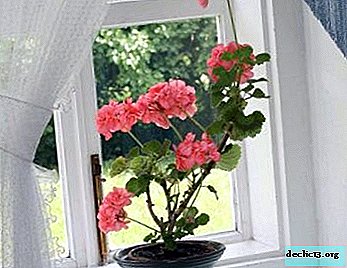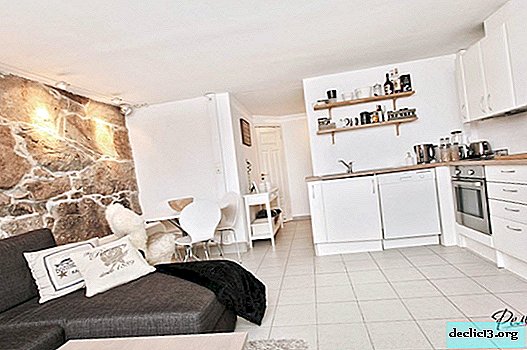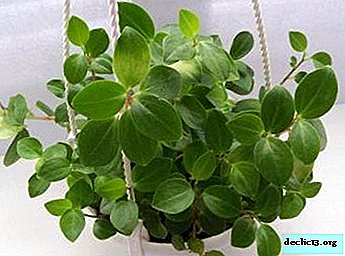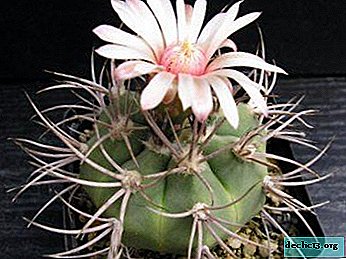Ambulance to a green friend - why do the leaves of the anthurium turn yellow and what to do to save it?
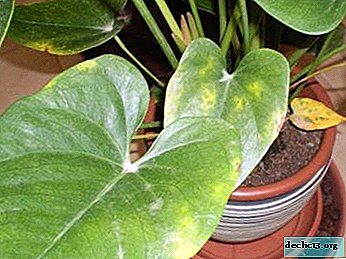
Anthurium is often used to decorate a home or office, its bright, as if waxed, flowers and succulent leaves of a rich green color allow to achieve a unique decorative effect.
This plant is able to bloom most of the year, but for this it needs a sufficient amount of light, moisture and nutrients.
A sure sign that the flower is missing something is yellowed withered leaves. Why foliage dries and turns yellow and how to care for the plant in this case, more in our article.
When is the yellowing of a flower Male happiness considered normal?
Aging is a natural process inherent in any living organism, anthurium is no exception. Old leaves turn yellow and fall over time, the intensity with which this happens depends on the age of the plant, as a rule, no more than 1-2 leaves per year. If instead of fallen leaves, new ones grow and the plant feels good in general, the situation does not require any measures.
Another reason for yellowing leaves that does not require anxiety is stress (for example, after moving or transplanting). Subject to all the rules of care, the anthurium quickly adapts to changes and its foliage again acquires a bright green color.
Important! If a week after a transplant or relocation, the plant continues to turn yellow and wilt, then the cause is not only stress. In this case, it is necessary to understand as soon as possible what negatively affects the anthurium and eliminate this factor.The main causes of the disease and recommendations on how to cure the plant
Anthurium is not often sick or suffering from a pest, in most cases, yellowing of the leaves is associated exclusively with improper care. It is important to monitor the condition of the plant and take measures before the damage done to the flower becomes irreparable.
Excess moisture
 One of the most common reasons why leaves turn yellow and fade is excessive moisture, which over time leads to rotting of the roots and damage to the plant by mold or fungus.
One of the most common reasons why leaves turn yellow and fade is excessive moisture, which over time leads to rotting of the roots and damage to the plant by mold or fungus.
The reasons are usually the following:
- excessive watering;
- improperly selected substrate;
- too spacious pot;
- insufficient or improperly organized drainage.
What to do in this case? First of all, it is necessary to normalize the watering regime, if this did not have a beneficial effect on the plant, it means that the roots were seriously damaged and only a transplant will help, during which it is necessary to remove all damaged sections of the root system and place the anthurium in a properly selected substrate and pot.
Attention! Anthurium juice is poisonous and can cause a serious allergic reaction or food poisoning, therefore, all manipulations with the plant that may cause damage to it must be done with gloves, and after the procedure, wash your hands thoroughly.Lack of lighting
Plants native to hot tropics often lack light in indoor conditions. Despite the fact that Anthurium is classified as shade-hardy species, in the twilight its leaves begin to turn pale and yellow.
You can correct the situation by moving the plant closer to the light source, for healthy growth and flowering in the warm season, the anthurium needs bright diffused lighting lasting at least 10 hours.
Direct sunlight should be avoided, as they cause burns on the leaves. (yellow or pale brown spots) and can provoke a general overheating of the plant.
Incorrect feeding
 From April to August, almost all indoor plants need additional top dressing, as this is a period of growth and flowering.
From April to August, almost all indoor plants need additional top dressing, as this is a period of growth and flowering.
If fertilizers are not applied, the lower leaves may begin to turn yellow and fall off. This is because in the soil there are not enough elements necessary for the appearance of new leaves, and the plant takes them from the old. In this case, it is enough to start applying fertilizers.
Too much nutrition can be as fatal as its lack. Too much concentration of fertilizer in the soil can cause root burns, which will inevitably lead to wilting of leaves and shoots.If you suspect excessive feeding fertilizers should be stopped immediately. If the condition of the plant has not returned to normal within a week, it is necessary to transplant it into a new substrate, removing damaged sections of the roots in the process.
Hypothermia
If the flower is in a draft, near an air conditioner, or is exposed to low temperatures (below +15 degrees), its leaves will begin to become soft, yellow and become covered with dark spots (for what other reasons, spots of various colors may appear on the leaves here). It is important to restore the temperature and remove the anthurium away from the flow of cold air. Damaged leaves are best removed to speed up plant regeneration.
Fungus
Brown spots and yellowing of the leaves may indicate infection with a fungus, from which fungicide treatment of the entire plant, including the root system, will save. Damaged leaves are best removed.
What other diseases can threaten anthurium read here.
Why does the foliage dry and turn yellow at the edges?
The most common causes:
- insufficient watering;
- dry air
- overheat;
- incorrect transplant;
- incorrectly selected soil.
If the leaves turn yellow and dry along the edges, with a high degree of probability this is a consequence of insufficient and irregular watering or too dry air. In order to save the plant, it is enough to normalize the watering schedule and begin to regularly spray the anthurium. Also, to increase air humidity, you can put the pot in a tray with wet expanded clay.
Incorrectly selected soil, which can also cause yellowing of the leaves, will have to be replaced. If the roots were damaged during the transplantation, it is necessary to create the most favorable conditions for the anthurium and help to recover (for example, using a root formation stimulator).
Photo
In the photo you can see how the yellow spots look on the leaves of Male happiness:


This is a photo of a plant that has the tips of the leaves dry:


How to care for a plant to bloom?
In order for the anthurium to bloom rather, it is necessary to create comfortable conditions for it:
- air temperature - + 20-24 degrees;
- humidity - 60-80%;
- bright diffused lighting (daylight hours of at least 10 hours);
- regular plentiful watering (in warm time 2-3 times a week);
- regular feeding (3-4 times a month during the period of active growth).
The key to health and abundant flowering of anthurium at home is the right care. If the plant is warm, light, it receives a sufficient amount of moisture and nutrients, it will constantly delight its owner with beautiful bright foliage and petals.



